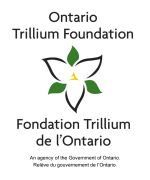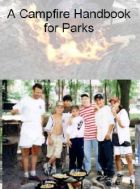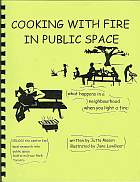

Pages in this Folder:

Related Folders:
See also Department Site Map
Support Provided by

Toronto Parks and Trees Foundation

This website has received support from celos.ca through the Trillium foundation.
Publications
Comments?
For the basics, see
- Website & Privacy Policies
- How To Get Involved
- The Role of the Park
Search options:
Department Site Map
Custodians:
Everyday events and more..
EVERYDAY EVENTS: The events listed above were just the unusual events. The everyday things were much more of a focus for the people in the park – the explosion of youth activities in the park every spring, the care of the gardens, the wading-pool and wood-oven scene in July and August, the many months of rehearsal and prop-making near the field house, and then, of course, the skating rink in the winter, and all the social life around it. There were also crises from time to time, involving a few beatings (one very bad one) and robberies, some largely unsuccessful attempts to work with the police and the courts, and the ups and downs of trying to keep a decent standard of public behaviour in the park (this included some struggles with youth, with homeless men and women who either drank too much or heard too many voices, and with a kind of “park rage” that sometimes leads strangers to become very angry with each other).
AWARDS: During 2001 it was heartening to get two signs of public recognition for what happens at our park: an award connected with Jane Jacobs and her strong regard for urban neighbourhoods, and a “Great Community Place” award from an international parks conference in New York. “FATE OF THE PARK”: Even more heartening was the Parks and Recreation Director’s response to the “Park Blueprint” that came out of our first “Fate of the Park” meeting on Feb.19, 2001. Don Boyle, the director, allocated a budget to the park and declared his willingness to work with the suggestions in the Blueprint. This meant that the dire predictions for summer 2001, of no pizza oven days and a much reduced playground staff, did not come to pass. In fact, that summer was a fine one, and the park was often full of people. There was some anxiety in the neighbourhood that the park was getting too busy, but there were enough peaceful times – and enough beauty in just the gardens and the trees and the leisurely games of frisbee or park checkers – that this anxiety did not intensify.
SOME WINTER TROUBLES: The good relations between the “friends” and the Parks staff began to unravel a bit when the rink season began. City rinks have been tough to manage for many years, and despite good intentions, this past winter the problems – of staff allocation, rink maintenance, weather responsiveness, and communication – all came back again. Although our rink got better treatment than most, because of the “squeaky wheel” rule, the city management structure is so much bigger now that requests to have a conversation and work out the problems often got little or no response. Still, the winter was mild and dry, the rink machinery performed well, and the staffing of our particular rink was generally good, so that at the end of the rink time it was possible to say this had been our best rink season ever.
WHAT NOW? What is left now, in 2002, is to see whether good relations between city parks management and the friends of the park can return. Dufferin Grove Park, because it is such an established neighbourhood place by now, is a bit of a rock in the stream of city’s current approaches to public space. When it became known that city council had approved closing the outdoor artificial ice rinks during most of December (the busiest rink month) to save money, there were so many e-mails and phone calls from this neighbourhood that one rink in each ward was opened on time. The policy of “harmonization,” i.e., centrally adjusting all the parks to offer the same package, plays very badly in this neighborhood. Charging for previously free play space (such as the use of the cement hockey rink pad for ball hockey, when the ice is out), plays badly. Giving permits for neighbourhood parks to stage regional events, such as the Conklin midway/ product-sampling fair organized by the Charisma Advertising Company for five Toronto Parks including ours (although our event is now cancelled), seems to be extremely unpopular.
All these measures seek to address the financial problems faced by the city. Even if we don’t like what the city staff suggest, we must still address the problem of park costs (and our taxes). We may wish to suggest some promising alternative way to run a park. In order to do that, it seems necessary to first know roughly what the costs, and the city finances, are. Appendix One gives our “Friends of Dufferin Grove Park” income and expenditure (summary). Appendix Two gives our best estimate of the yearly cost, to the city, of running our park (with details showing how we arrived at those numbers). Appendix Three gives the context of the current municipal financial struggles: it shows how the operating expenditures for Parks and Recreation, and for the former City of Toronto as a whole, rose during the last 30 years before amalgamation. Our inventory of capital expenditures is still to come, as is our untangling of the new Parks and Recreation budget since 1998 (now covering a huge area).






 Printer friendly version
Printer friendly version